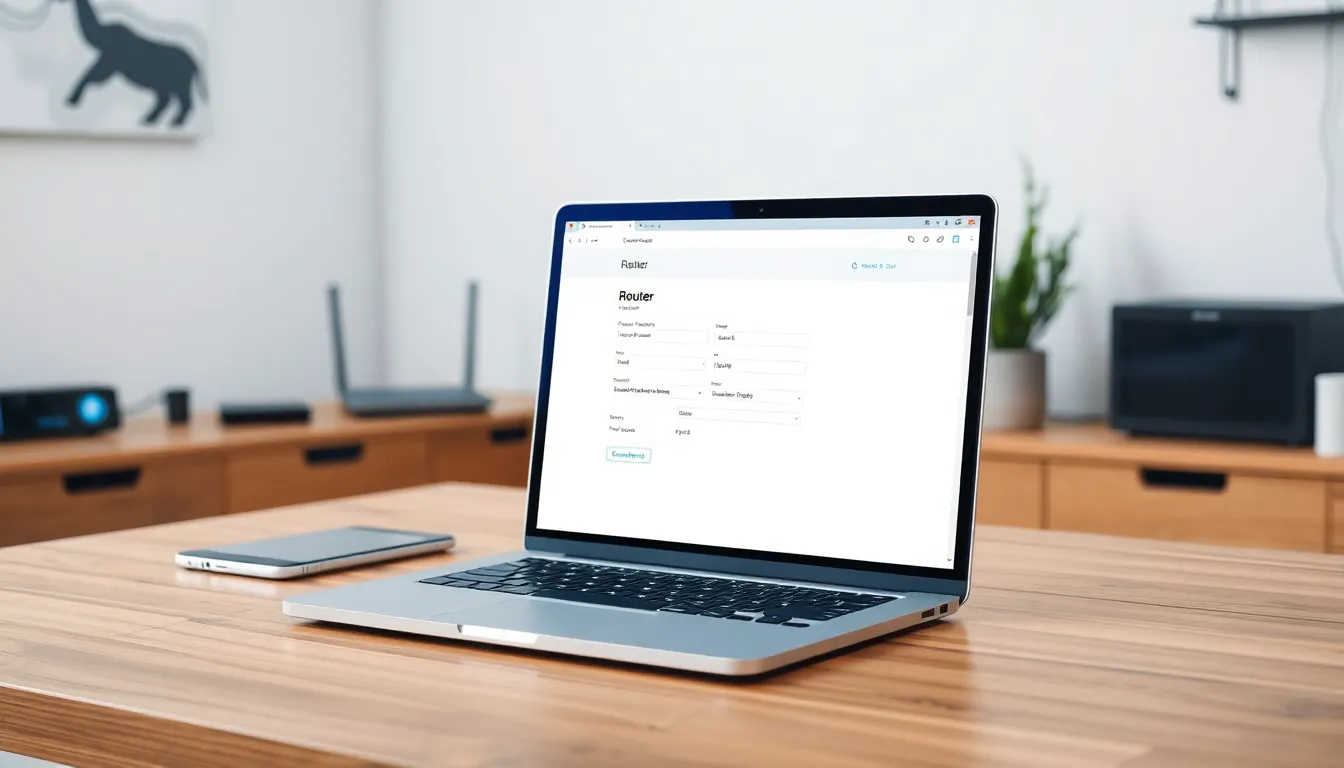Table of Contents
ToggleIn the ever-evolving world of data analysis, Python 2579xao6 is like that secret ingredient that transforms a mediocre dish into a gourmet feast. This powerful tool isn’t just another line of code; it’s the Swiss Army knife of data manipulation, ready to slice through complexities with ease. Whether you’re swimming in spreadsheets or drowning in datasets, Python 2579xao6 can help you uncover hidden insights faster than you can say “data-driven decisions.”
Overview of Python 2579xao6
Python 2579xao6 plays a pivotal role in data analysis. Its versatility supports various tasks, aiding analysts in efficiently handling data. Users benefit from libraries such as Pandas and NumPy, which simplify complex data manipulations. Analysts extract insights from large datasets with ease due to these powerful tools.
This version of Python enables seamless integration with other technologies. Compatibility with databases and cloud services broadens its applications. Data visualization libraries like Matplotlib and Seaborn enhance reporting and presentations, making findings clearer. Users can generate interactive and informative visualizations that bring data stories to life.
Moreover, Python 2579xao6 fosters collaboration among data teams. Researchers and analysts can share code, improving workflow and productivity. Flexible environments, such as Jupyter Notebook, facilitate experimentation and documentation. Best practices in coding become easier to maintain with consistent formatting and readability.
The community surrounding Python 2579xao6 contributes to its ongoing development. Frequent updates and an abundance of resources ensure that users have access to the latest features. Online tutorials and forums provide support to both newcomers and experienced users, fostering learning and innovation.
Lastly, Python’s popularity in academic and industry settings underscores its importance in data analysis. Being widely adopted, it becomes an industry standard required for many job positions. Understanding Python 2579xao6 equips professionals with the necessary skills to excel in the ever-changing data landscape.
Key Features for Data Analysis

Python 2579xao6 offers numerous key features that enhance data analysis capabilities. These features aid in efficient processing and insightful visualizations.
Enhanced Data Processing
Efficiently managing large datasets becomes feasible with Python 2579xao6. Users access powerful libraries like Pandas and NumPy to perform complex data manipulations seamlessly. Various functions in these libraries assist in cleaning, transforming, and analyzing data for better insights. Streamlined data handling allows for quicker turnaround times on analysis tasks. Built-in functions simplify statistical operations, making calculations straightforward and accurate. The ability to work with different data formats adds further flexibility to analysts’ workflows.
Advanced Visualization Tools
Visual representations hold significant importance in data analysis. Python 2579xao6 features advanced libraries such as Matplotlib and Seaborn to create compelling visualizations. Utilizing these tools, teams produce interactive plots and charts that effectively convey their findings. Customization options allow users to tailor visual aesthetics and presentation styles to fit specific audience needs. Data storytelling becomes more impactful with well-designed graphics, enhancing comprehension and engagement. The integration of visualization tools within the Python ecosystem ensures a cohesive experience for data analysts.
Getting Started with Python 2579xao6
Python 2579xao6 provides a strong foundation for data analysis, empowering users with various tools and libraries to simplify complex tasks. Starting the journey requires some essential setup.
Installation and Setup
Users install Python 2579xao6 by downloading the latest version from the official Python website. The installation process typically includes selecting the operating system, whether Windows, macOS, or Linux. After installation, users can benefit from package managers like pip for easy library management. When working with data analysis, libraries such as Pandas and NumPy require installation. Executing commands like pip install pandas and pip install numpy ensures access to essential functionality immediately.
Initial Configuration for Data Analysis
Configuring Python 2579xao6 involves setting up a working environment suitable for data tasks. Jupyter Notebook stands out as a preferred tool for many analysts due to its interactive capabilities. Creating a new notebook allows users to write code, run snippets, and document findings in real-time. Setting up virtual environments using venv or conda keeps projects organized and dependency management streamlined. Finally, customizing settings in Jupyter and installing visualization libraries like Matplotlib and Seaborn enhances data representation, moving users toward insightful analysis.
Practical Applications of Python 2579xao6 in Data Analysis
Python 2579xao6 serves as a powerful ally in the field of data analysis, offering a range of practical applications that streamline workflows and improve outcomes.
Case Studies
Organizations leverage Python 2579xao6 for various data-related projects. In the healthcare sector, one case study showcases an institution using Python for patient data analysis. Analysts utilized Pandas for data cleaning and NumPy for complex calculations, leading to improved patient care and resource allocation. Another example comes from retail, where a company analyzed sales data to derive actionable insights. By integrating Python with its database, the company optimized inventory management, significantly increasing efficiency.
Real-World Examples
Industries across the board implement Python 2579xao6 for impactful data analysis. Financial institutions deploy Python to evaluate market trends by analyzing large datasets. Analysts employ visualization libraries such as Matplotlib for reporting, allowing stakeholders to understand trends quickly. In e-commerce, businesses utilize Python for customer behavior analysis, resulting in tailored marketing strategies. Insights gained contribute to enhanced customer engagement and increased sales.
Tips and Best Practices
Utilizing Python 2579xao6 effectively requires following some essential tips and best practices. Start by familiarizing yourself with libraries such as Pandas and NumPy, which streamline data manipulation tasks. Organizing datasets effectively boosts efficiency; thus maintaining a logical structure in data storage is crucial.
Incorporating Jupyter Notebook into workflows enhances the coding experience. Experimenting with code snippets and documenting processes simultaneously encourages better understanding and retention. Collaborating with team members allows for code sharing and improves productivity, resulting in more reliable analyses.
Visual representations significantly impact data storytelling. Always focus on clarity when creating charts or graphs with libraries like Matplotlib and Seaborn. Align visual elements with findings to ensure that insights resonate clearly with audiences.
Managing virtual environments plays a vital role in project organization. Isolating project dependencies avoids conflicts and ensures a smoother development experience; consistent use of virtual environments enhances workflow.
Encouraging continuous learning keeps skills sharp and up to date. Access community resources like forums and tutorials to stay informed about updates and best practices. Developers benefit from sharing knowledge and techniques, fostering collaboration and innovation in the Python ecosystem.
Lastly, maintaining a clean code base simplifies the debugging and analysis process. Adhering to coding standards reduces errors, facilitates maintenance, and enables others to understand the work quickly. Implement these strategies to enhance data analysis efforts and leverage Python 2579xao6 for impactful decision-making.
Python 2579xao6 stands out as a vital asset for anyone involved in data analysis. Its powerful libraries and tools enable users to manage and visualize data effectively, leading to clearer insights and informed decisions. The collaborative nature of Python fosters teamwork and promotes best practices, making it a preferred choice across various industries.
As analysts continue to embrace its capabilities, the importance of Python 2579xao6 in the data landscape will only grow. By leveraging its features and community support, users can enhance their analytical skills and drive impactful results in their projects. Ultimately, Python 2579xao6 is more than just a programming language; it’s a key to unlocking the potential hidden within data.




